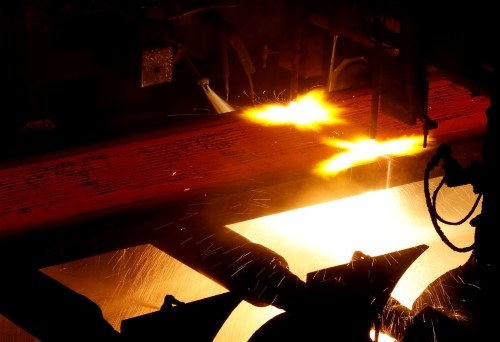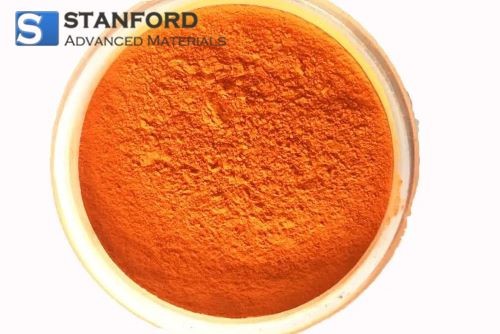Case Study: Elevating Plating Applications To New Heights With Indium Sulfide Powder
Introduction
Indium Sulphide (In2S3)-Powder is a material employed in coating applications. It has been demonstrated to improve surface durability and functionality. Documented evidence shows that the powder has quantifiable advantages that support process enhancements across various industrial sectors. This article details the coating applications of the powder and aims to provide technical clarity.

Figure 1. Metal Coating
Understanding Indium Sulphide Powder
Indium Sulphide (In2S3) appears as an orange-red to red powder and exhibits a sulphurous odour typical of sulphides. It remains insoluble in water and most organic solvents, and it decomposes in common mineral acids, thereby releasing hydrogen sulphide gas.
In electroplating, In2S3-Powder is used as a catalyst to facilitate galvanic processes. This catalytic effect aids the formation of coatings with specific properties. Consequently, the powder improves durability, adhesion, and overall functional performance.

Figure 2. In2S3-Powder
Applications of Indium Sulphide Powder in Coating
The use of In2S3-Powder in coating spans several areas. Some documented applications are:
Galvanic Coating: In2S3-Powder is utilised to enhance surface quality by adding a protective layer that provides corrosion resistance and improved adhesion.
Optical and Electronic Applications: The inherent properties of In2S3 extend its use to optics and electronics. Its semiconducting characteristics render it suitable for thin-film solar cells and optoelectronic devices.
Photoelectrochemical Applications: Owing to its light-absorbing properties, the powder is applied in photocatalytic processes, thereby contributing to cleaner energy production and environmental remediation.
Precise Thin Film Coatings: In2S3-Powder facilitates the deposition of thin layers that precisely coat substrates. This is particularly useful for manufacturing protective and functional coatings.
Environmental and Energy Applications: The photoactive characteristics of In2S3 support sustainability initiatives. Its utilisation in solar cells and energy conversion technologies contributes to advances in sustainable energy practices.
Indium Sulphide: Sustainable Solar Cell Technology
Indium Sulphide (In2S3) is increasingly applied in the solar energy sector, particularly in photovoltaic cells based on copper indium gallium diselenide (CIGS).
Increased Efficiency via Buffer Layer: In2S3 functions as a buffer layer in CIGS solar cells. It facilitates effective electron transport between the light-absorbing CIGS layer and the transparent conductive layer.
Cadmium-Free Alternative and Sustainability: In2S3 may replace cadmium sulphide, a material formerly used as a buffer layer in CIGS solar cells. The substitution quantitatively reduces the reliance on toxic materials.
The replacement of toxic substances and the measured improvement in solar cell performance both contribute to enhanced energy conversion efficiency and a reduced environmental impact.
Conclusion
The integration of Indium Sulphide (In2S3)-Powder in coating processes represents an advancement in surface treatment and functional coating techniques. It enhances corrosion resistance and supports improvements in optical, electronic and energy conversion processes. In2S3 demonstrates potential to contribute to process improvements within the technical industry.
Stanford Advanced Materials (SAM) is a verified supplier of Indium Sulphide-Powder and a range of indium products, from pure metal to compounds. Please submit an enquiry if you are interested.
Reference:
[1] Obayashi, Y., & Shimizu, R. (2021). Nippon Steel könnte Gewinnprognose aufgrund starker Nachfrage aus Übersee übertreffen - Geschäftsführer [Photo]. https://www.reuters.com/business/nippon-steel-may-beat-profit-forecast-strong-overseas-demand-executive-2021-06-03/

 Bars
Bars
 Beads & Spheres
Beads & Spheres
 Bolts & Nuts
Bolts & Nuts
 Crucibles
Crucibles
 Discs
Discs
 Fibers & Fabrics
Fibers & Fabrics
 Films
Films
 Flake
Flake
 Foams
Foams
 Foil
Foil
 Granules
Granules
 Honeycombs
Honeycombs
 Ink
Ink
 Laminate
Laminate
 Lumps
Lumps
 Meshes
Meshes
 Metallised Film
Metallised Film
 Plate
Plate
 Powders
Powders
 Rod
Rod
 Sheets
Sheets
 Single Crystals
Single Crystals
 Sputtering Target
Sputtering Target
 Tubes
Tubes
 Washer
Washer
 Wires
Wires
 Converters & Calculators
Converters & Calculators
 Chin Trento
Chin Trento


